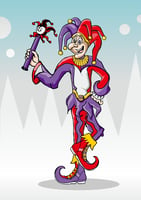People are living longer than ever before and by 2030, 1 in 6 people will have reached the age of...
Which Famous Landmarks are Powered by Gears
Anyone who has ever tried to ride a bicycle up a very steep hill knows how hard it can be. If you don't use the correct gear to maximize your climbing force, it is pretty much impossible. It's a different story once you're back on a straight path - after some momentum, you can go flick to another gear and make the wheels spin around even quicker than you're pedaling.
It only takes one scenic bike ride to appreciate the power of gears.
What are gears?
Gears are a convenient way to create more speed or force or send a machine's force off in a different direction. They are mechanisms that mesh together through teeth and are used from one shaft to another to transmit rotary motion. Found in every industry, gears are useful in complex machinery and devices of all sorts, not just cars and bikes.
When we conjure up a picture of what a gear looks like, spur gears the ones we usually think of. They are the ones with straight teeth, and they look like cogs. However, there are several distinct types of gears, including helical gears, internal gears, worm gears, bevel gears, and planetary gear systems.
Famous uses for gears
Although the most common gear uses lie in machinery, bicycles and car engines, they are also essential in some of the world's most cherished landmarks. Here are a few examples.
1. Big Ben in London, UKBig Ben is synonymous with the iconic landmark clock tower overlooking the Thames River over the years. But did you know the name only refers to the large bell of the tower?
Big Ben chimes to the note of E every hour of the hour - this is regulated by an elaborate ticking mechanism deep within the tower. How does such a large analog clock function? On long cables, there are enormous weights that connect to a series of gear trains. Clock engineers wind the cables three days a week, and the gear trains rotate when gravity forces the weights down.
A tooth of the clock escapement's gear wheel is released by each swing of Big Ben's pendulum, allowing the gear train to progress by a set number. The sound of the next tooth catching creates that ticking sound.
2. The Space Needle in Seattle, USAThe Space Needle, an iconic Pacific Northwest landmark, is a tower in Seattle, Washington. Designed for the World's Fair of 1962, the structure is visited every year by millions from across the world (2020 notwithstanding, of course). At 605 feet (184 m), the Space Needle offers stunning downtown Seattle views, the Port of Seattle, and Mt. Rainier in the distance.
The revolving glass floor of the Space Needle is known as "The Loupe," which alludes to the magnifying devices used by jewelers and watchmakers. It is situated just below the open-air observation deck and replaces the original (non glass) rotating floor present when the tower first opened in 1962.
The mechanics of the rotating glass floor or turntable are also in full view and include 12 motors and 48 rollers capable of completing a full rotation in just 20 minutes!
3. The Eiffel Tower in Paris, FranceThe Eiffel Tower was designed for the 1889 Paris International Exhibition to mark the 100th anniversary of the French Revolution. Judges unanimously selected Gustave Eiffel's out of the 700 designs submitted in a design competition. At 300 meters and 7,000 tons, it was the tallest building in the world until 1930.
The 119-year-old Eiffel Tower uses industrial-sized cogs, gears, and cables that spin and grind deep within the building's depths, out of sight from the millions of tourists who visit the tower annually. Under the tower's legs, extensive cellars contain massive hydraulic engines powering the two visitor elevators.
As we can see, gears power some of the world's most iconic structures. So when travel returns and you visit one of the landmarks mentioned above, why not take a moment to appreciate the humble cog's role in its stunning success?



